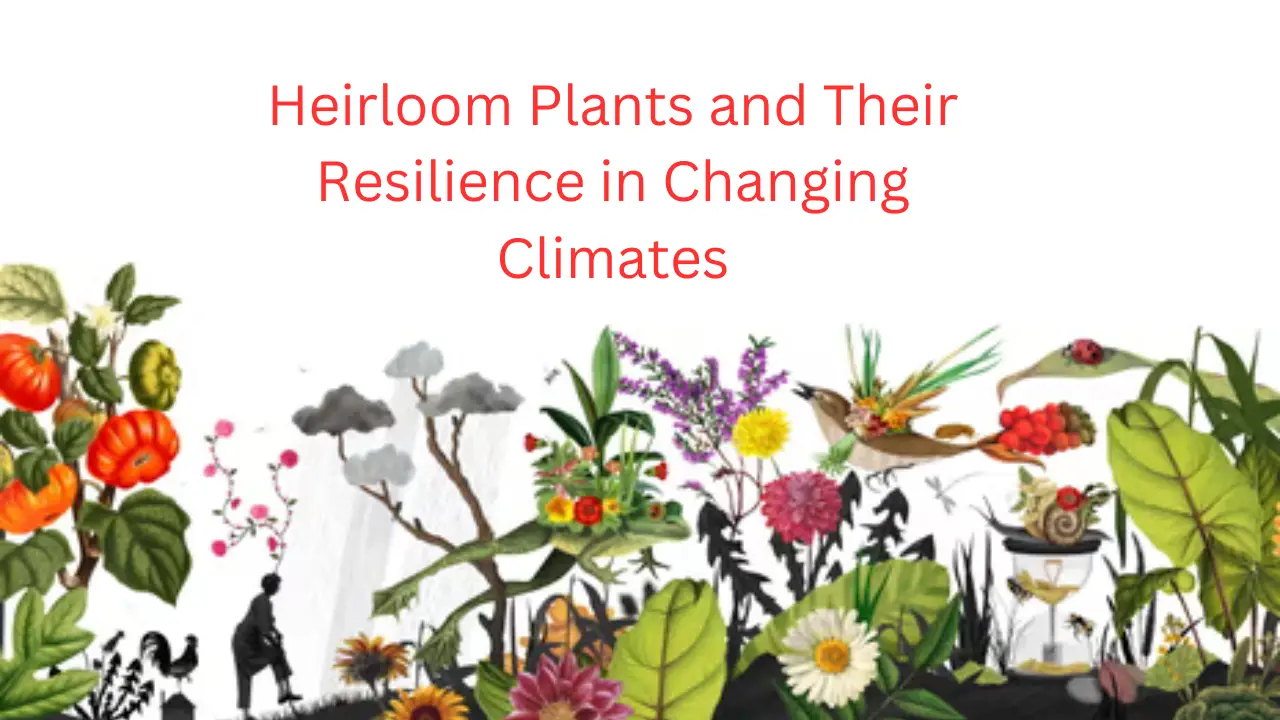
Thermacell Mosquito Repellent E-Series Rechargeable Repeller; Patio Shield 20’ Mosquito Protection Zone; includes 12-Hr Repellent Refill; No Flame or Scent; Bug Spray and Bug Zapper Alternative
27% OffHeirloom Plants and Their Resilience in Changing Climates
Introduction
In a world where climate change is an ever-pressing concern, the importance of preserving biodiversity and adapting to new environmental challenges cannot be overstated. Heirloom plants, also known as heritage or open-pollinated plants, have emerged as unsung heroes in the battle against shifting climates. In this article, we will delve into the fascinating world of heirloom plants and explore their remarkable resilience in the face of changing environmental conditions.
Understanding Heirloom Plants
What Are Heirloom Plants?
Heirloom plants are a special category of plants with a rich history. They are cultivars that have been passed down through generations, often for a century or more. These plants are typically open-pollinated, which means they reproduce by natural mechanisms like wind, insects, or birds, rather than through controlled hybridization. This natural reproduction process contributes significantly to their resilience.
The Significance of Genetic Diversity
One of the key attributes of heirloom plants is their genetic diversity. Unlike modern hybrid varieties, which often prioritize specific traits like uniformity or size, heirlooms carry a wide range of genetic material. This diversity allows them to adapt more readily to changing climates, as they possess a broader spectrum of genetic tools for survival.
Resilience of Heirloom Plants
Adaptation to Local Climates
Heirloom plants have an uncanny ability to adapt to their local environments. Over generations, they have acclimated to the specific conditions of their growing regions. This adaptation makes them inherently more resilient to fluctuations in temperature, precipitation, and soil composition.
Pest and Disease Resistance
Due to their genetic diversity, heirloom plants have built-in defenses against pests and diseases. Unlike monoculture crops that are vulnerable to widespread infestations, heirlooms can fend off attackers more effectively, reducing the need for chemical pesticides.
Drought Tolerance
As climate change leads to more frequent droughts in various regions, the drought tolerance of heirloom plants becomes increasingly valuable. These plants often have deep root systems that enable them to access water from deeper soil layers, ensuring their survival during dry spells.
Nutritional Benefits
Many heirloom varieties have retained their original nutritional profiles, which can be superior to modern counterparts. These plants offer a source of nutrient-rich food that can be especially important in regions with changing agricultural conditions.
Preserving Heirloom Plants
The Role of Seed Savers
Seed savers play a critical role in preserving heirloom plant varieties. These dedicated individuals and organizations collect and store heirloom seeds, ensuring their availability for future generations. Supporting seed-saving initiatives is vital in maintaining the genetic diversity of these resilient plants.
Home Gardening and Heirlooms
You can contribute to the preservation of heirloom plants by incorporating them into your own garden. By doing so, you not only enjoy unique and flavorful produce but also help maintain these plants’ genetic diversity.
Conclusion
Heirloom plants are a testament to the power of nature’s resilience. Their ability to adapt to changing climates, resist pests and diseases, and provide nutrient-rich food makes them invaluable in a world grappling with environmental challenges. As stewards of our planet, it is our responsibility to appreciate, protect, and propagate these remarkable botanical treasures.
FAQs
- What makes heirloom plants different from hybrid varieties? Heirloom plants are open-pollinated and have a rich history of passing down their genetics through generations. Hybrid varieties, on the other hand, are created by controlled crossbreeding and often prioritize specific traits.
- Why are heirloom plants important for biodiversity? Heirloom plants contribute to biodiversity by preserving a wide range of genetic material, which can be critical for adapting to changing climates and environmental challenges.
- How can I start growing heirloom plants in my garden? You can start by sourcing heirloom seeds from reputable suppliers or seed-saving organizations. Plant them in your garden and follow specific growing instructions to ensure their success.
- Are heirloom plants more sustainable than modern crops? In many cases, heirloom plants are more sustainable because they often require fewer inputs like pesticides and fertilizers due to their natural resilience.
- What can individuals do to support the preservation of heirloom plants? Individuals can support the preservation of heirloom plants by buying heirloom produce, participating in seed-saving initiatives, and advocating for biodiversity conservation.
Heirloom plants stand as a testament to nature’s adaptability and resilience. As we face an uncertain future with changing climates, these plants offer hope and sustenance for generations to come.











